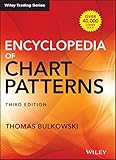
Sentiment: Bullish
Direction: Continuation
What Is The Bull Pennant Chart Pattern?
A Bull Pennant is a bullish chart pattern commonly found mid-trend as a continuation pattern.
A bull pennant consists of a sharp move upward in price to create a pole.
After resistance is reached, consolidation forms in a converging triangle pattern to form the pennant shape.
How To Identify The Bull Pennant Pattern?
In the Bull Pennant, a strong bullish trend encounters resistance.
As the price declines and moves back up, consolidation becomes more compact, with lower highs and higher lows.
Most times, this results in downward-sloping resistance and upward-sloping support trendlines.
What Is The Psychology Behind The Bull Pennant Pattern?
The bull pennant pattern is a continuation chart pattern that can provide traders with valuable insights into the market’s psychology.
It’s characterized by a sharp price increase (the flagpole) followed by a period of consolidation (the pennant).
The pennant is typically a symmetrical triangle, with the upper and lower trendlines converging towards each other.
The pattern typically takes several days to several weeks to form and is a sign of a potential continuation of the previous uptrend.
Traders interpret the pattern as a sign of a temporary pause in the market’s bullish sentiment, where buyers and sellers are evenly matched, but ultimately buyers regain momentum and push the price higher.
The psychology behind the bull pennant pattern is that the sharp price increase represents a period of strong buying pressure, where buyers are in control and pushing the price higher.
However, some buyers take profits, and sellers step in to take advantage of the high prices, causing the price to consolidate and form the pennant.
The consolidation period represents a period of indecision in the market, where buyers and sellers are unsure of the direction of the trend.
As the pattern continues to form, buyers regain momentum and push the price higher again towards the previous high, and potentially beyond.
Once the price breaks out of the pennant, it’s a signal that the uptrend is likely to continue, and traders may enter long positions.
How To Trade The Bull Pennant Pattern?
To trade the Bull Pennant pattern, traders typically wait for the price to break out of the pennant with a strong volume surge.
The breakout should ideally occur on higher than average trading volume, as this confirms that there is significant buying pressure behind the move.
Traders may enter a long position once the price breaks out of the pennant, with a stop loss placed below the lower trendline of the pennant.
The profit target can be set based on the height of the flagpole, with the expectation that the price will move at least the same distance as the flagpole’s height in the direction of the breakout.
Alternatively, traders may wait for a pullback to the upper trendline of the pennant before entering a long position.
This approach can provide a better risk-to-reward ratio, as the entry price is closer to the lower risk support level.
However, it may also result in missing out on some of the initial gains from the breakout. Ultimately, the best approach will depend on the trader’s risk tolerance, trading style, and market conditions.
It’s worth noting that the bull pennant pattern can also result in a false breakout, where the price briefly breaks out of the pennant before reversing course.
Traders should be aware of this possibility. Also be sure to use technical indicators and other tools to confirm the validity of the breakout. Access these tools at TradingView.
Bull Pennant Performance Expectations Explained
Bull pennants are usually expected to result in a bullish breakout from the upper trendline.
You can get a potential target by taking a measurement from the previous breakout creating the pole, then projecting it from the top of the bull pennant.


